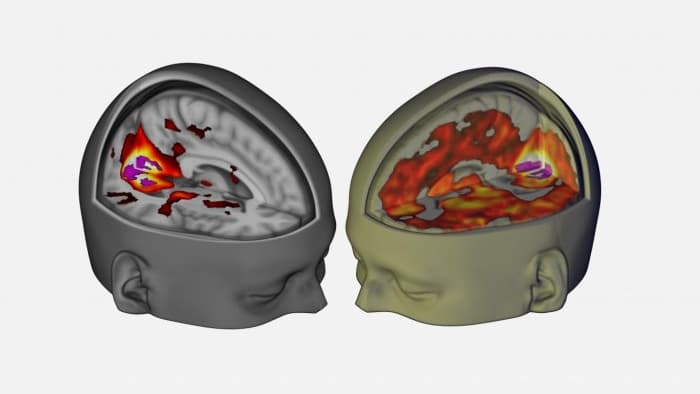
The team of scientists, in collaboration with the Beckley Foundation, took brain scans of 20 volunteers who were administered 75 micrograms of LSD (Lysergic acid diethylamide) using fMRI (functional magnetic resonance imaging) and magnetoencephalography (MEG). A control group was given a placebo. The images enabled researchers to look at electrical activity and blood flow throughout the entire brain.
LSD users typically experience complex visual hallucinations. And while the visual cortex located in the back of the head processes information from our eyes under normal conditions, the researchers found that during LSD use, a number of other brain areas also contribute to visual processing.
In other words, the volunteers were seeing with their eyes closed, with the information coming from their imaginations instead of the outer world. And other areas of the brain not normally involved with visual processing were contributing to the show. The higher a volunteer rated the complexity of their visions, the more activity appeared on their brain scan images.
According to Mendel Kaelen, a PhD student in the Department of Medicine at Imperial College and an author of the study, one of the interesting effects of LSD is its ability to engender "ego-dissolution," a blurring or dissolving of the boundaries of one's normal identity or sense of self.
"We found that this experience was associated with a reduced integration, a reduced communication within high level brain networks," says Kaelen, "while simultaneously brain areas that normally tend to communicate more indirectly with each other via these high level brain areas, started to communicate more directly with each other. We believe that this temporary breakdown of the brain's normal hierarchy is key to understanding the effects of psychedelic drugs."
The group also studied the effects of LSD on a user's subjective experience of music, which presents a real-life application for the drug's psychotherapeutic potential in conjunction with music.
"We observed a reduced coupling under LSD between a region involved in memory-construction and the visual cortex, that became suddenly strongly coupled in response to music under LSD," says Kaelen. "The magnitude of this increase correlated with increases in eyes-closed images and personal memories people reported. This is interesting, given the drug's revolutionary role on the shaping of music and art, as well as important clinically."
The reason scientists are only just now mapping the brains of LSD users is due in large part to the criminalization of the drug in the 1960s, seriously hampering research efforts since. As those constraints relax a bit, new imaging technologies are also now available to researchers that weren't around 50 years ago.
"Scientists have waited 50 years for this moment – the revealing of how LSD alters our brain biology," says Professor David Nutt, the senior researcher on the study. "For the first time we can really see what's happening in the brain during the psychedelic state, and can better understand why LSD had such a profound impact on self-awareness in users and on music and art. This could have great implications for psychiatry, and helping patients overcome conditions such as depression."

 Previous page
Previous page Back to top
Back to top







